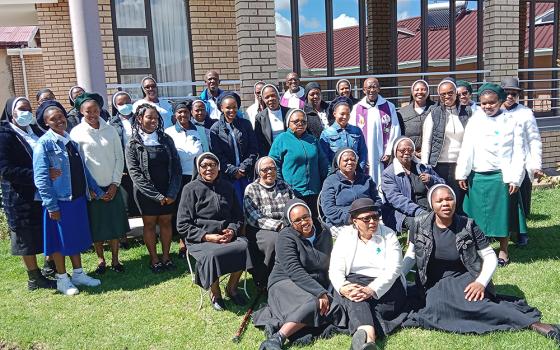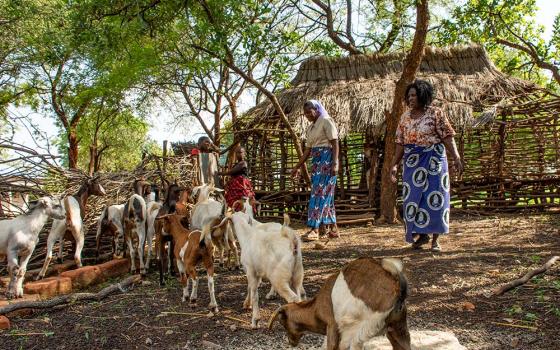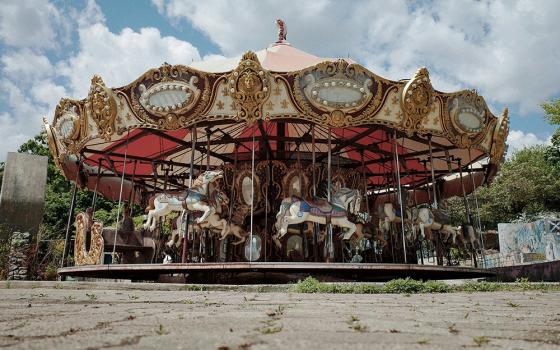
People gather at a cemetery to visit the graves of their loved ones during the Day of the Dead festivities, in Mazatlan Villa de Flores, Mexico, Nov. 2, 2025. (OSV News/Reuters/Jorge Luis Plata)
Millions flocked to Mexico's vibrant streets in late October and early November for its world-famous Day of the Dead festivities, yielding a projected economic boost to the country this year of $2.69 billion, according to the national chamber of commerce group Concanaco Servytur.
In Mexico City, it was hard to deny the festive atmosphere. People packed parade routes featuring dancing skeletons, bakeries churned out what seemed like around-the-clock sheets of pan de muerto, a fragrant bread of the dead, and women, children and men painted their faces as skeletons to join the light-hearted approach to death.
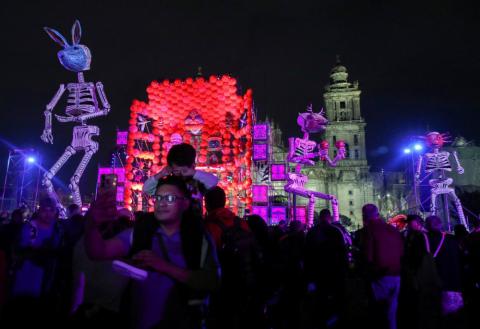
A man takes a selfie next to other people gathering near art installations of skeletons and other decorations at Zocalo Square in Mexico City Oct. 30, 2024, the eve of the Day of the Dead. The Metropolitan Cathedral is seen in the background. (OSV News/Reuters/Henry Romero)
As festivities coincided with a meeting of Catholic sisters from Latin America organized by the Conrad N. Hilton Foundation, a substantial donor of Global Sisters Report, my colleague, Benedictine Sr. Helga Leija, suggested we arrive a few days early since meetings leave little time to talk to folks outside. The obvious faith-based connections of Catholicism with the Day of the Dead are plain to see: the belief in a continuation of life after death.
But there was something unsettling in conversations and news within the country — something visible, if subtle, in Day of the Dead altars in parishes and chapels. Along with family members who've died natural deaths, some Catholic parishes, such as the Jesuit Parroquia Sagrada Familia, chose to honor this year a group of people whose presumed demise is at odds with the cheerfulness of Mexico's Day of the Dead celebrations: the disappeared.
In Mexico, around 120,000, or 130,000 by some estimates, have disappeared in the last two decades. Though they are presumed dead, little seems to have been done to locate their bodies or find out what happened to them by anyone except for their families. Some in the Catholic Church, including sisters, have listened to their cries for help.
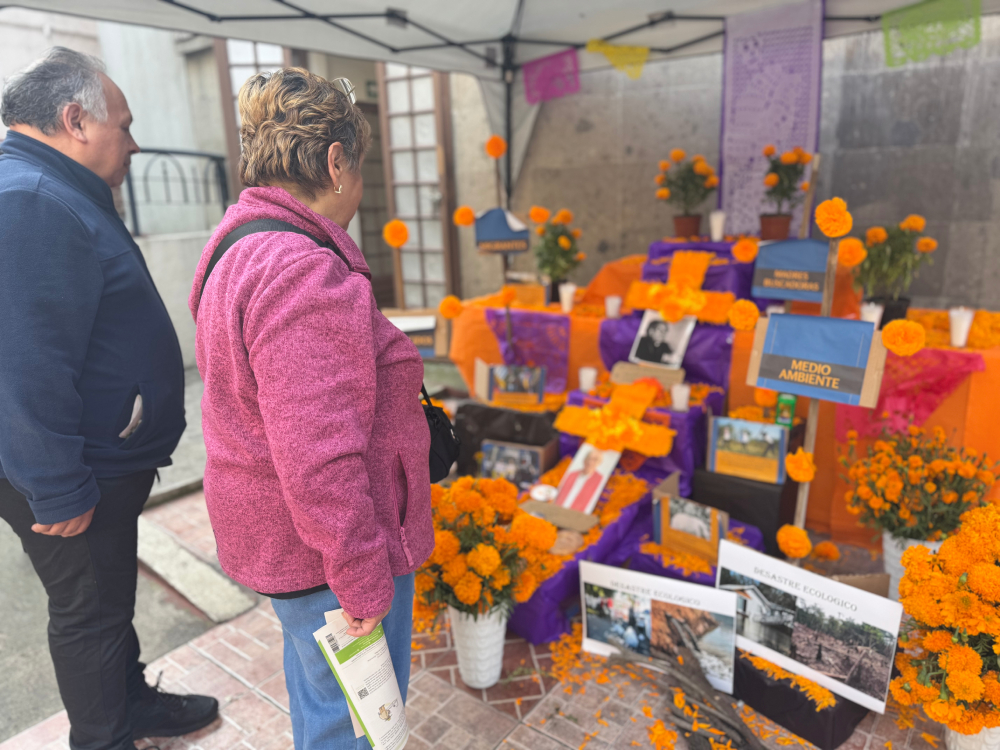
A couple stops by to pray at a Day of the Dead altar Nov. 2, 2025 outside a chapel at the Parroquia Sagrada Familia in Mexico City. Those disappeared and presumed dead appeared in the altar. (GSR photo/Rhina Guidos)
"Who are the disappeared in Mexico?" I asked Sr. Clara Malo Castrillón, provincial of Mexico's Society of the Sacred Heart, during a meeting Oct. 29.
"It's a broad definition," she said. "We can be referring to missing children, women, men, youth. But in reality, when we talk about the disappeared, it tends to be victims of organized crime."
There's also a sense that almost all of them are poor.
"It's a mystery why they disappear. Some of these kidnappings never resulted in [kidnappers receiving] ransom money," Malo said. "Many of them are boys, young men, whom organized crime wanted to recruit and if they refused, they were killed. Nothing more is heard from them. Others are migrants passing through the country, kidnapped for money and maybe didn't pay [extortion money]. They are never heard from again. Many young women also are missing, and no one knows where they ended up."
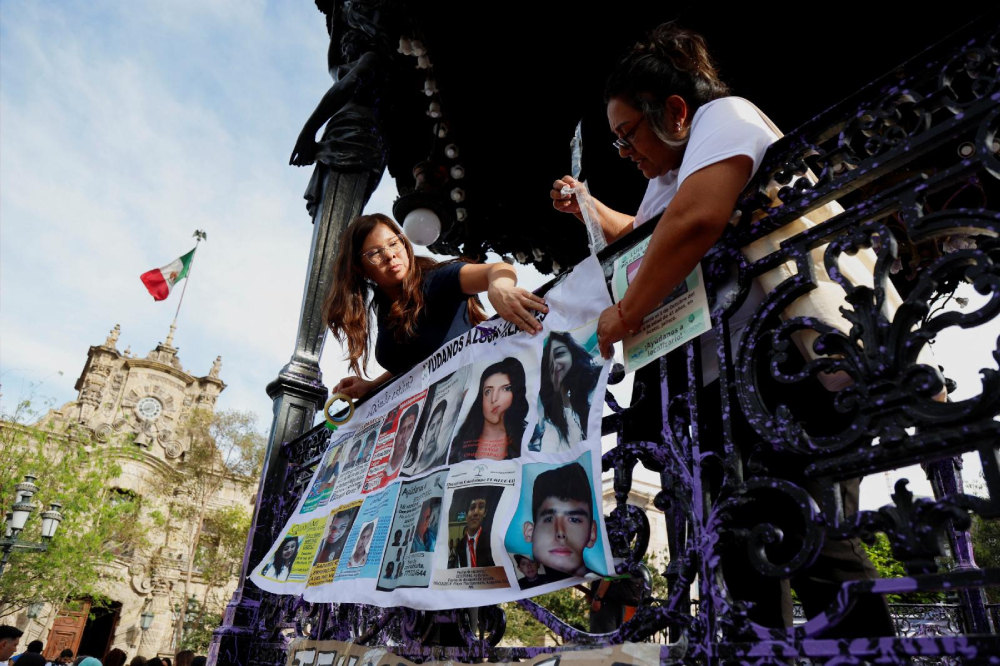
People take part in a vigil in Guadalajara, Mexico, March 15, 2025, for the victims of a clandestine mass grave found in Teuchitlan, in the state of Jalisco. Mexico's Catholic leaders prayed for the country's missing and urged the population of the country and their political leaders to listen to victims of violence amid outrage over the discovery of mass graves and ovens for cremating bodies on a drug cartel compound. (OSV News/Reuters/Michelle Freyria)
Families searching for missing loved ones use the Day of the Dead, a span of a few days from Oct. 28 to Nov. 2, and Mother's Day, celebrated May 10 in Mexico, to press the government for answers. They have formed colectivos, groups of families, mostly mothers, and push the government to do something.
Mass graves routinely pop up around Mexico every now and then, but the killings go unpunished and the landscapes where they are found yield few answers. In October, authorities announced they had discovered 48 bags of human remains near the tourist destination of Guadalajara.
When you have so many different cadavers, in parts, it's difficult to identify who's in the graves and families still don't get the answers they need, Malo said.
With little information to go by, most assume the drug cartels, or the government working in conjunction with them, are to blame.
Advertisement
It's a claim the government refuted in a June 2025 press release, saying it "rejects any claims that the State systematically and extensively carries out enforced disappearances. Any allegation or suggestion to this effect is unacceptable."
But what's unacceptable to many is the astronomical number of missing people, the government's lack of information on the situation and its inability to stop the disappearances. The colectivos have been taking them to task over it.
In 2023, Sr. Paola Clerico Medina of the Eje de Iglesias y Espiritualidades de la Brigada Nacional de Búsqueda, a brigade of churches helping families search for their missing loved ones, helped organize a Christmastime posada event, in which people decorated photos of the missing and tied them to barriers outside the national palace in Mexico City. They broke open piñatas in front of the building, the seat of the Mexican government, with the words "lies," "discrimination," and "indifference."
Clerico, of Mexico's Religious of Jesus-Mary, said families, particularly mothers who search for their missing children, have been an inspiration.
"They are restoring dignity to Mexico," she told GSR Nov. 3 via WhatsApp.
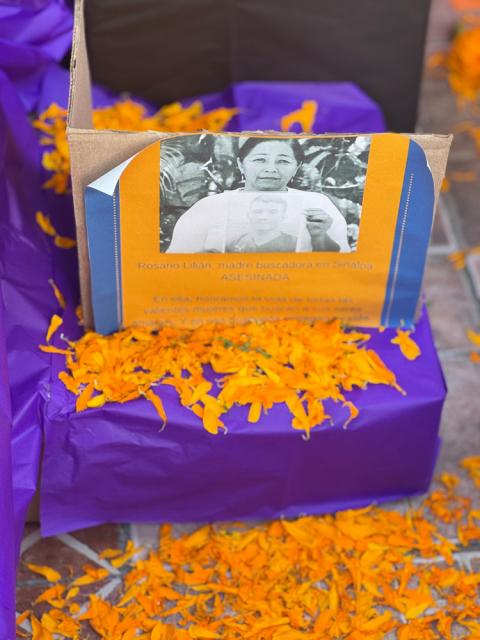
The photo of a woman who was killed, presumably because she denounced disappearances in the country, was featured on a Day of the Dead altar at Mexico City’s Parroquia Sagrada Familia Nov. 2, 2025. At least 27 of those looking for the missing also have been killed and some disappeared. (GSR photo/Rhina Guidos)
But it has come with a price. At least 27 of those who dedicated their lives to search for the missing have been killed. Dubbed buscadoras, Spanish for "women who search," they forced the government to address the less palatable side of death in the country, the one unrelated to the whimsical and profitable Day of the Dead.
They appeared in Day of the Dead altars at the Jesuit parish, located in the fashionable Roma neighborhood of Mexico City, a quick walk to Paseo de la Reforma, ground-zero of the festivities.
In a Nov. 2 New York Times opinion piece, Claudio Lomnitz, a professor of anthropology at Columbia University, said that while some families take part in the Day of the Dead observations by building altars with lavish foods for their loved ones — with the belief that their souls return to their earthly homes once a year — those with disappeared family members cannot embrace death, nor heal from it in the same way.
"Families with absent loved ones cannot visit or be visited by their dead in the cemetery or at a home altar. There is now a whole class of people — the families of the disappeared — whose capacity to mourn is hijacked by the cruelty of hope," he wrote.
But this year their mourning couldn't be drowned for long by the millions of cheering dancing skeletons in the megacity. Just as Mexico City found itself in the throes of the Day of the Dead Nov. 2, shots rang out in a smaller celebration a few hours away.
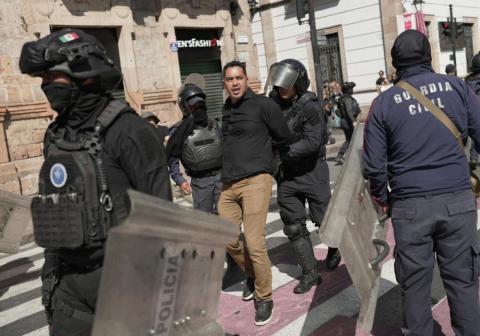
Riot police detain a man during a demonstration in Morelia, Mexico, Nov. 2, 2025, over the assassination of Uruapan Mayor Carlos Manzo. Manzo was assassinated Nov. 1 in a plaza in front of dozens of people who had gathered for Day of the Dead festivities, authorities said. (OSV News/Reuters/Ivan Arias)
That's where Carlos Alberto Manzo Rodríguez, mayor of the municipality of Uruapan, who had stepped out to participate in the festivities, was gunned down and killed in public. He had called for order to be restored and criticized Mexico's cartel violence.
The new work of the dead is to force the living to see and address the causes of Mexico's collective wound, Lomnitz wrote in his Times' piece.
"It is time to treat the hundreds of thousands of people who have been killed and disappeared not as an external phenomenon but as the victims of an economy rooted in violence," he wrote. "By asking the dead to bring our society back together, Día de los Muertos can once again become an essential, unifying force — not through nostalgic irony but through a necessary, profound act of collective reckoning."

